As a mindfulness practitioner, facilitator and educator, writer and researcher, I welcome this opportunity to investigate a topic so close to my heart. Having studied mindfulness with the Mindfulness Association at Samye Ling and Holy Isle, I completed an MSc in Studies in Mindfulness (Aberdeen, 2021). My work focused on the uses of mindfulness skills in building resilience and combatting burn out in stressful occupations. One of the outcomes of this research was how ‘community’ itself is an enriching space for people to share, grow and develop and practice. In 2022, with funding from the Royal Society for Arts, manufactures and commerce, (RSA)1 Seed Catalyst Fund Award, I set up SMILE, a training platform for developing Skills in Mindful Innovative Learning Environments, a bespoke course for those embarking a career in stressful occupations. 2
Equity, Diversity and Inclusion or EDI as it is also known as,3 the acronyms, DEI4 or even DIE5 are also used and have increasingly begun to underpin policy and practice in a number of institutions in both the private and public sectors. Such growth in interest in this area may be attributed to the Equality Act 2010,6 that legally protects people from discrimination in the workplace and in wider society. The Act requires that:
Public bodies have due regard to the need to: eliminate discrimination, advance equality of opportunity, foster good relations between different people when carrying out their activities.[7]
The Equality Act 2010, also defines nine protected characteristics which need to be considered – age; disability; gender reassignment; pregnancy and maternity; marriage and civil partnership; religion and belief; sex and sexual orientation. There are also a number of characteristics that are not mentioned by the Act which will also need to be raised in my work.
Once I get through the crux of the issue of dealing with definitions, theory, practice and receive approval from the University Ethics Committee, I hope to examine the intersection between EDI and mindfulness communities. Promising work has been done in this area but largely in the context of North America. This investigation hopes to address this particularly with reference to understanding how EDI maybe incorporated into mindfulness training curriculums. It is thought that this can better inform us on how to embrace diversity and thereby enriching mindfulness communities in EDI awareness and in our daily lives and practice.
Some of the questions that I am asking are: how the Equality Act 2010 impacts on mindfulness organisations and communities? Is it the responsibility of mindfulness providers to raise awareness of EDI issues? What is our responsibility as a community to welcome the principals of equity, diversity, inclusion into our groups and organisations? Do we unintentionally exclude people? How can we model and embody the principles of equity, diversity and inclusion?
Therefore, I hope to engage with members of the Mindfulness Association and with the wider mindfulness community on how to promote best practices and enhance EDI policies within mindfulness organisations teaching in the UK and globally.
I envisage that sharing this blog will be an opportunity to engage with the community here and any feedback, thoughts and comments on this topic are most welcome do contact me:
Shirley Gonsalves
1 https://www.thersa.org/
2 https://web.archive.org/web/20221205170854/https://smilemindfully.com/
3 University of Edinburgh, What Does Equality, Diversity and Inclusion Mean?
4 Ideal.com, What Diversity, Equity and Inclusion Really Mean
5 Bernstein, R., & Bulger, M., & Salipante, P., & Weisinger, J., (2020). From Diversity to Inclusion to Equity: A Theory of Generative Interactions. Journal of Business Ethics. 167. 10.1007/s10551-019-04180-1.
[6] UK Government, Equality Act Guidance
[7] Ibid.


